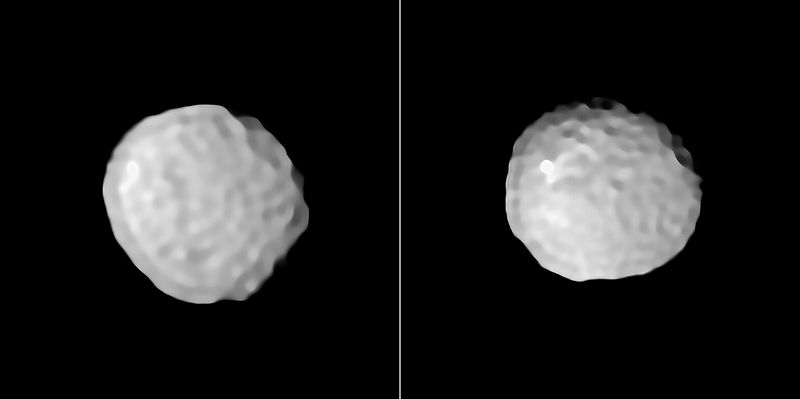Image: Pallas - Potw2008a

Description: A new study led by Pierre Vernazza (Laboratoire d’Astrophysique de Marseille, France) conducted using ESO facilities has observed the asteroid Pallas for the first time at extremely high angular resolution. The asteroid could be successfully observed in such great detail thanks to the Adaptive-Optics (AO)-fed SPHERE imager on the Very Large Telescope (VLT). German astronomer Heinrich Wilhelm Matthäus Olbers first discovered Pallas on 28 March 1802. Named for the Greek goddess Pallas Athene, the asteroid — along with many other asteroids discovered in the 19th century — was initially classified as a planet. As time passed and technology improved, Pallas was later reclassified as an asteroid. Today it is famous for being the third-largest asteroid in the Solar System, with an average diameter of 512 km. Although Pallas is the largest known asteroid in the Solar System after Ceres and Vesta, it is the only one of these large asteroids that has not been visited by a spacecraft. This is due to its orbit, which has an unusually high inclination to the plane of the Earth’s orbit — which means it is particularly challenging to land a spacecraft on. These new images show that the surface of Pallas displays very interesting topographic features suggesting a violent collisional history. Numerous large craters are found in both hemispheres of Pallas, forming a surface resembling a golf ball. The two distinct large impact basins on its surface could also be related to a family-forming impact — a collision which caused an original object to fracture into several separate bodies. The bright spot which appears in the southern hemisphere of Pallas (right image) is also very reminiscent of the salt deposits on Ceres.
Title: Pallas - Potw2008a
Credit: https://www.eso.org/public/images/potw2008a/
Author: Credit: ESO/M. Marsset et al./MISTRAL algorithm (ONERA/CNRS)
Usage Terms: Creative Commons Attribution-Share Alike 4.0
License: CC BY-SA 4.0
License Link: https://creativecommons.org/licenses/by-sa/4.0
Attribution Required?: Yes
Image usage
The following page links to this image:

